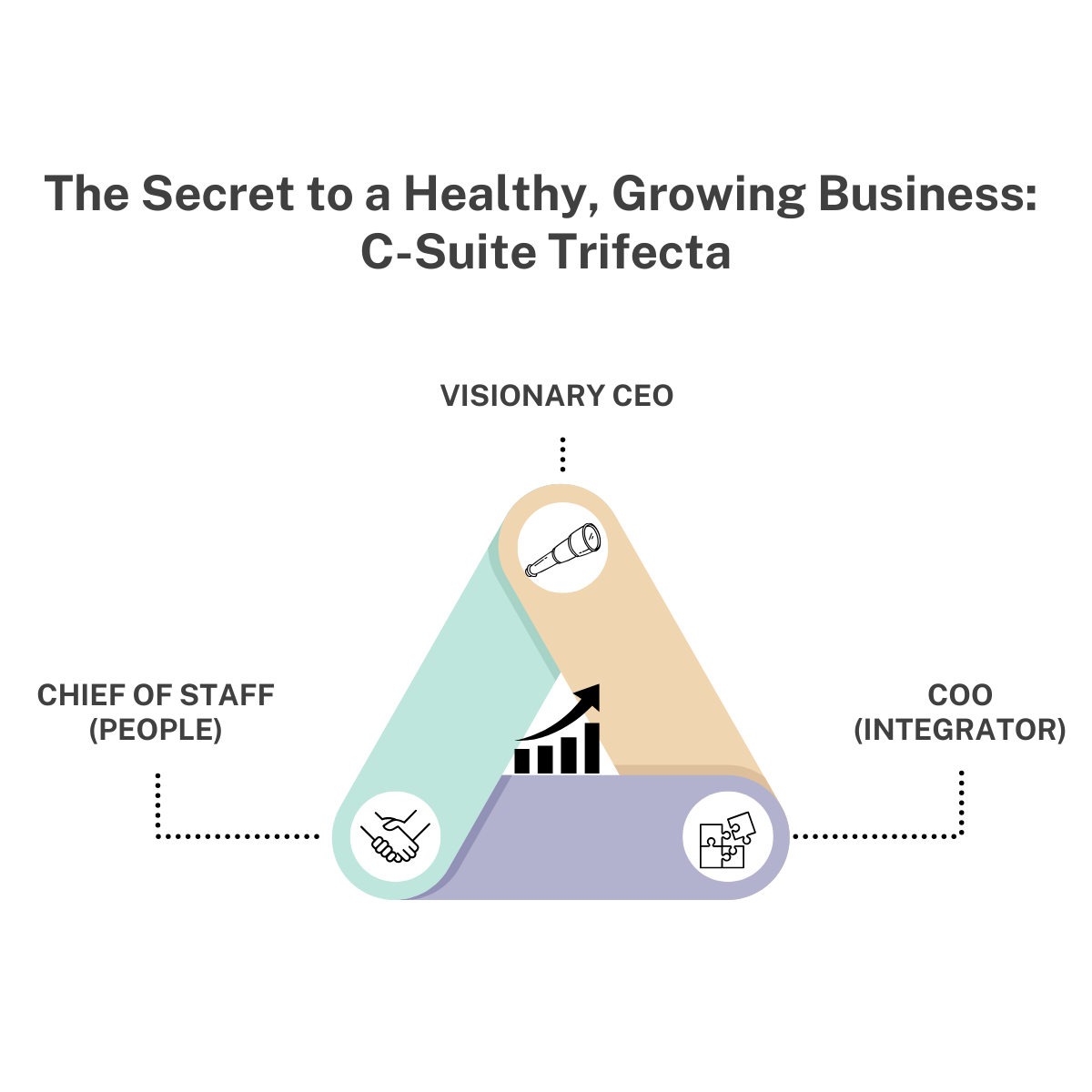One of the most common complaints from business owners is that managing people is difficult. They often find it challenging and, quite frankly, don’t enjoy it. This issue has led to significant problems for many businesses, including:
- Lower productivity
- Poor company culture
- Difficulty in retaining rockstar employees
Many companies face leadership challenges and often turn to strategic coaches for help. These outside coaches use programs like the Entrepreneurial Operating System (EOS) and System and Soul Coaching to help align their teams around a clear vision and plan. However, it’s important to note that these coaches are meant to provide temporary guidance, not to take the place of existing team members in the long run.
So, What’s Missing?
The core issue is the absence of a chief of staff. This role is crucial for team organization, accountability and achieving goals.
Here’s the issue:
- – Owners often hesitate to pay for a full-time Chief of Staff (COS).
- – Chief Operating Officers (COOs) are not always trained or empowered to do this work. In many cases, they shouldn’t be expected to.
- – No one on the team knows how to fill this leadership gap.
Businesses often face challenges with leadership and growth, leading them to rely on strategic coaches. However, it might not be the best fit when these coaches are put into leadership positions for a long time. This situation can negatively impact how well the business runs, its overall work culture, and its ability to keep talented employees.
The Leadership Trifecta
Throughout the years, we’ve highlighted the importance of having a great chief operating officer (COO). While that role is still very important, we’ve come to understand that businesses benefit from having more than just one person leading the way.
For a company to build a positive environment and truly grow, it’s important to have a strong leadership team made up of three key roles. These three leaders work together to guide the business in the right direction and foster a healthy company culture.
- Visionary CEO: focused on business development, marketing, big thinking, and setting the company’s direction and goals.
- Chief of Staff COS: manages the team and ensures open lines of communication, a strong and healthy culture, talent continually developed, and bottlenecks being resolved.
- Chief of Operations COO (Integrator): manages and improves business operations, which includes systems, tech, processes, providers, KPIs. Works closely with the Visionary CEO and Chief of Staff to resolve bottlenecks.

When these three roles work together, a business can thrive. Each role has distinct responsibilities, yet they all rely on one another.
The Problem with EOS Alone
Earlier we mentioned the EOS system, which many businesses use because it provides helpful tools for managing operations. However, EOS doesn’t fully address important leadership aspects, particularly how to manage teams and build a positive company culture. In reality, a successful business relies on more than just efficient systems and processes; it also requires strong leaders who are well-suited for their roles.
How To Right Size the C Suite
Advisory firms seeking to build long-term solutions must start by identifying the gaps in their current team. Here’s how we do it:
- 1. Responsibilities Chart: Clarifying responsibilities within the team helps identify these gaps and prompts discussions about hiring external providers versus creating a full-time job description for a new hire. We also explore opportunities for current team members to step into new roles.
- 2. Role Charting: We assist businesses in outlining their growth ambitions to assess how quickly they wish to expand, evaluate the feasibility of those goals, and determine if they can maintain profitability during growth. Our goal is to help businesses increase their revenue so they can eventually hire a qualified chief of staff when the time is right.
- 3. Career Pathing: This chart provide a business with clarity on all its team members at a glance and their progressing paths. It also offers a visual technique to move people in and out of roles as they progress.
- 4. Life Career Mission Statement™️: This technique allows everyone in a business to draft their statement and then collaborate with their manager or mentor to refine and clarify their path and goals. It shows individuals how they fit into the business’s larger trajectory and keep them invested in seeing the business grow. Owners can use the statement to continually refining a path for their own transition — from being an integral member of the executive team to mentoring, taking on an emeritus role, serving on the board of advisors, and finally moving onto a life outside the business.
Implementing these techniques into your business will make it easier to handle tasks, so you can focus your time and energy on developing skills to become a chief of staff (COS), chief operating officer (COO), or a true visionary.
Building for the Future
In the end, businesses need more than just quick fixes; they need leaders who can solve problems, create a positive work environment and encourage growth.
By concentrating on training, enhancing communication and boosting revenue, businesses can develop a team ready for success. With the right leadership trifecta in place, they can build a stronger, more sustainable company that is well-prepared for the future.